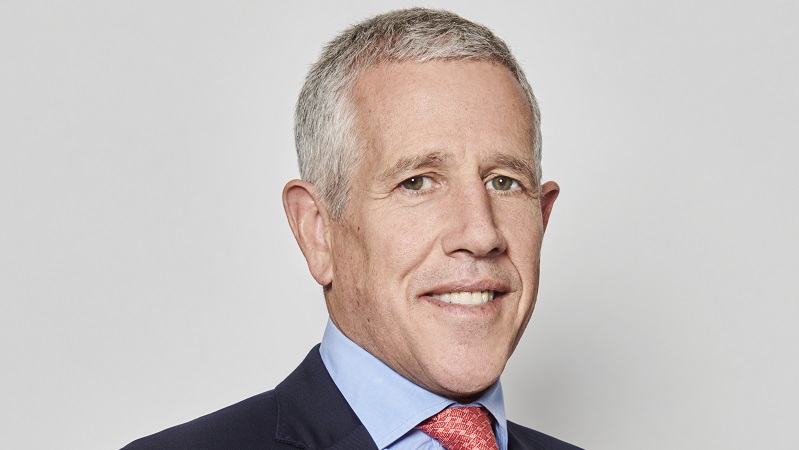“I am going to make a distinction,” Richard Charnock, chief executive of Standard Life Wealth, vowed to me, “and try to avoid the hackneyed trap everyone you interview probably falls into of saying: ‘We have a unique offering that nobody else has got’.”
The most obvious distinguishing feature comes from its name. It is able to take advantage of the research and investment resources of Standard Life plc, a firm that runs £155bn of assets across third-party, institutional, retail and mutual funds globally.
Tailored proposition
Charnock is also the managing director of investments for the life company, which means any investment proposition or solution delivered by Standard Life, managed mainly by Standard Life Investments, comes under his auspices.
He is understandably proud of a discretionary business he was charged with building less than four years ago.
“I still regard us as a new entrant, so this is a de novo business, conceived of in 2007 and launched in 2008. It attracted its first client in December 2008 so it has only been trading for three and a bit years,” he said.
Standard Life Wealth is a discretionary fund management business that Charnock and his chief investment officer, Eddy Reynolds, both describe as a tailored, target return, multi-goal, whole of market proposition. This is almost a mantra, especially the super-diversification part, as this whole string of phrases was mentioned time and again during the interview.
Individual needs
To put the £1.25bn of discretionary assets in context, Charnock also has overall charge of MyFolio, a multi-manager proposition – also with £1.25bn in assets – run by fund manager Bambos Hambi.
“One is a fund, the other is a portfolio. MyFolio is the fund, therefore investors get a fund; the other is a series of portfolios that are tailored and flexed according to an individual client’s needs,” Charnock explained.
Reynolds was the originator, creator, designer and initiator of the MyFolio funds so is ideally placed to explain the difference, and it is how the discretionary portfolios are put together that helps shape any claims Charnock has of offering intermediaries something unique.
“What connects them all is being highly diversified portfolios,” says Reynolds. “MyFolio uses a strategic asset allocation that will always have a weighting towards UK equities, US equities, fixed income and so on.
“The funds are a little bit more diversified than more traditional approaches in that we do include absolute returns, property, high yield debt, emerging market debt and so on.
“By contrast, Standard Life Wealth is what we call ‘super-diversified’ – it is quite a different approach and shares a lot of the underpinnings of GARS [Standard Life Investments’ multi-billion pound Global Absolute Return Strategies Fund].”
Challenge to order
MyFolio is generally used by investors with less than £100k of investable assets. Any amount over this tends towards discretionary fund management, with its core propositions kicking in at around £500k.
Charnock admits that Standard Life Wealth was brought to market to “challenge the established order”.
“Most of the organisations competitive in our space are members of the Association of Private Client Investment Managers and Stock¬brokers (APCIMS). There are around 200 of them, with £475bn under management in very similar strategies, investment philosophies and approaches. All of them will give you some spin about themselves but at the end of the day they are all tracking APCIMS benchmarks and are relative return strategies.”
Target return
What Standard Life Wealth has rolled out is a series of target return portfolios, with absolute return strategies, for private clients that are tailored to the individual. It is certainly unusual to hear about ‘target’ and ‘absolute’ returns contributing to the same investment objective, but this is key to their investment philosophy, targeting positive returns in all market conditions over a three-year time period.
Reynolds says: “The Investment Management Association (IMA) has decided absolute return means annual capital preservation at least, so we tend to focus more on the phrase ‘target return’, and specifically over a three-year period. Clients understand this, but if you tell them you are trying to outperform a composite index of this, that or the other, you have lost them already.”
Effectively the portfolios target cash-plus returns and there are probably ten variations of a core strategy with the tweak being the amount above cash that is targeted, from cash plus 2%, 2.5%, 3%, 3.5% and so on in rising increments.
Multiple objectives
Something else Standard Life Wealth believes is that each client has more than one financial objective. So throughout the process there are multi-goal portfolios to satisfy a client’s pension objective, their saving objective, a buy-a-house-in-the-South-of-France objective or whatever it may be. And, to complete the mantra, this is done through super-diversification.
He continues: “If you think about a traditional approach, you may have a percentage in UK equities, another percentage in overseas equities, fixed income, and so on. That is an asset allocation approach that tends to be fairly static.
Risk-aware process
“The way we think about it is the risk of the different investments we are considering putting in place, so we allocate according to risk not according to an asset class percentage of a portfolio. That is a key point – it is a very risk-aware process and we are very focussed on managing the overall risk of the portfolio.”
These investments are made through funds and derivatives. Any derivative positions are held within an authorised investment fund so the client only ever owns funds with different exposures traded through the derivative positioning.
Secondly, Reynolds looks to combine more than 30 different strategies, every single one of which he believes will reward the portfolios with a three-year investment horizon.
Opportunistic mode
He allocates according to the amount of risk wanted in each individual portfolio using risk rather than asset allocation. On top of the traditional assets that make up an efficient portfolio, Reynolds uses opportunistic strategies.
For example, tactically he wants exposure to oil and chooses to play this through an allocation to a Russian equity fund also taking advantage of Russian equities being cheap right now.
The final part of the investment make-up is to play relative value strategies.
“Whereas an opportunistic strategy might be, say, our oil play, with a relative value we are not so concerned whether the individual components are going to move up or down, but how they look relative to each other,” he states.
All the investment strategies come from a house view formed by teams of people run by head of global strategy Andrew Milligan. Not every private client’s intermediary can call on such resources, but thankfully Charnock and Reynolds both can.










